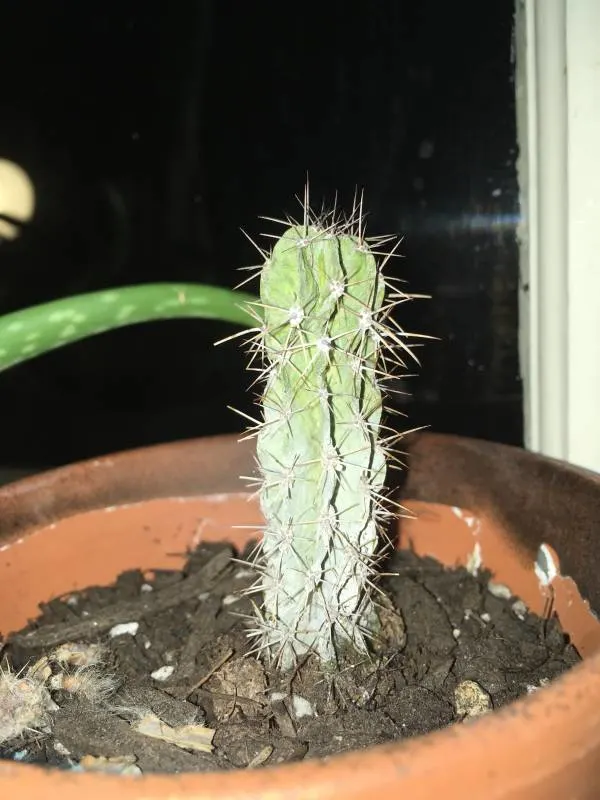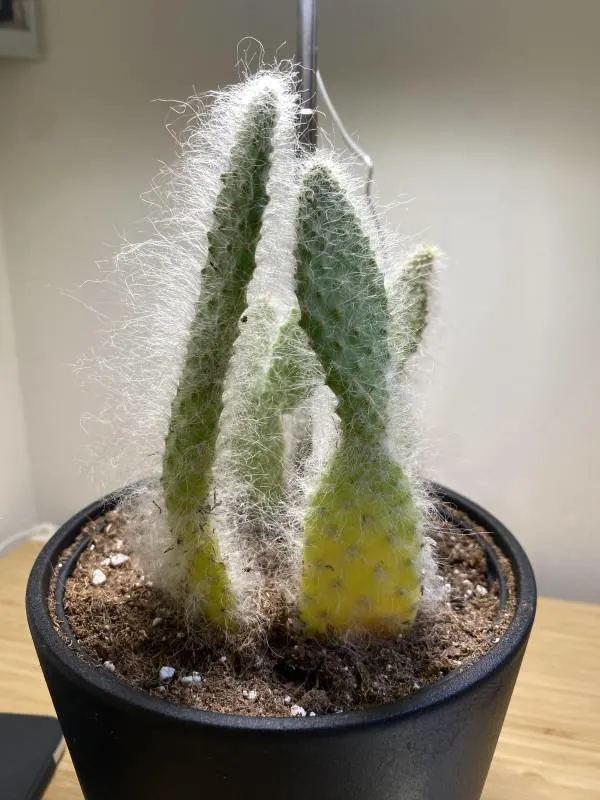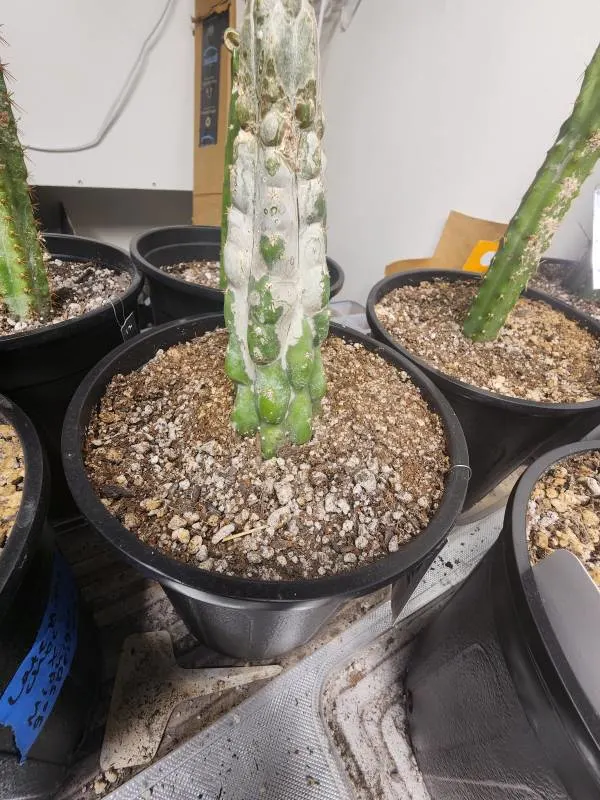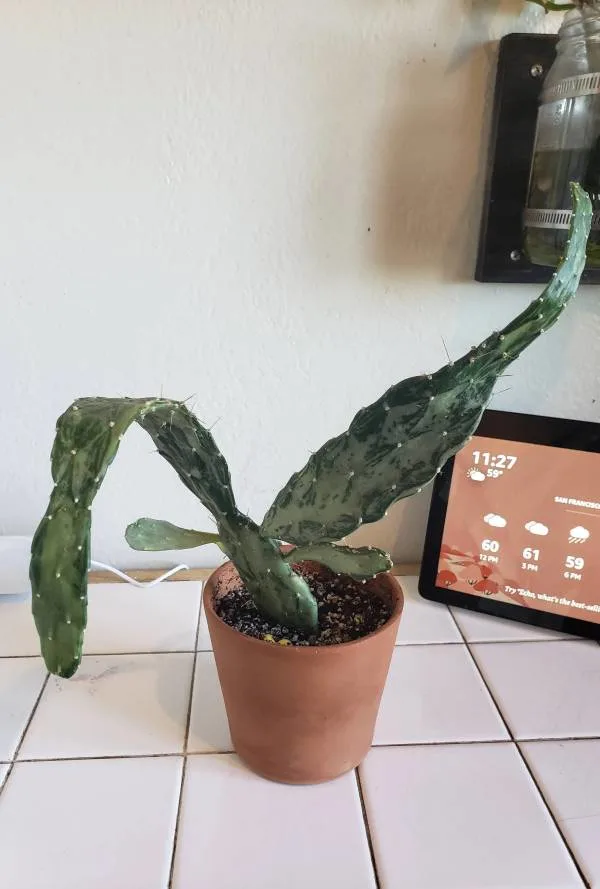Cacti are generally easy to take care of and don’t demand much attention, but they can collapse if they don’t get favorable growing conditions.
Since these plants grow slowly, it might take several weeks or even months to show signs of distress.
That’s why it is crucial to stay alert!
If you notice any changes in your cactus plant, don’t confuse it with dormancy because your cactus might be on the verge of becoming a dead plant.
So, how can you tell if your cactus is dead?
In this article, we will go through different signs that help you understand whether your cactus plant is dead. We will also discuss how you can revive a dead or dying cactus plants.
So, without wasting any time, let’s dive right in!

How to Tell If a Cactus Is Dead?
Identifying when is your cactus dying can be challenging due to its slow growth.
If your cactus is not at its best or starting to die off, specific signs will help you decide whether it’s time to part with it or not.
The most common signs of a dead cacti plants include:
1. Cactus Becomes Shriveled Up
You can tell that your cactus is dead by looking at its appearance.
If you notice that your cactus has shriveled up, there are many chances that your plant is in trouble or might be dead already.
You may see that the leaves of your cactus are turning brown and are dried up, or the stems are brittle and start to crack.
It means your plant is dehydrated, and you need to water until the soil is thoroughly wet – not overwatered. (Don’t worry, we’ll be discussing cactus care tips in detail, further in the article.)

2. If Your Cactus Feels Shaky and Light
If you notice your cactus displaying signs of instability, such as:
A light and hollow feel when lifted, or
Tendency to shake within its pot
That could indicate a struggling or dying plant.
A cactus becomes shaky and unsteady when its roots can no longer provide essential nutrients from the soil, often due to prolonged overwatering or underwatering, leading to root rot.
Additionally, a cactus that has died during the winter months may leave behind a stem with an airy, hollowed-out texture.
It happens because the moisture has evaporated from the stem, leaving nothing but the air pockets.
3. See If the Cactus Has Become Discolored
Caring for your cactus involves a keen observation marked by changes in color that are often a natural part of its life.
Similar to humans, cacti go through aging processes. During this process, some browning or discoloration is normal in the cactus, especially in older plants undergoing a natural aging process called corking.
It typically starts at the bottom and progresses upward.
However, it’s crucial to pay attention to your cactus and watch for signs beyond color changes.
If you notice your entire cactus turning brown or gray, along with shriveling or dried-up stems, it might indicate a more serious issue.
Similarly, yellow or discolored patches can signal potential problems, with mushiness from overwatering or dryness from underwatering.
Note: While cacti can change color due to environmental factors like sunlight exposure and temperature, consistent monitoring and proper care are essential in this regard.

4. Cactus Is Losing Its Spines
Just like changing in color, losing spines on your cactus can be part of a natural process.
But it’s essential to pay attention to certain signs.
Healthy cacti might shed spines due to recent transplanting or normal growth processes.
However, if you observe widespread loss of spines, accompanied by brown or black discoloration, it could indicate a more serious issue like root rot.
This condition can threaten the overall health of your cactus, leading to its death.
Keep a close eye on the growth patterns, and if you notice a lack of new growth along with continuous spine loss, it may be time to address potential problems or consider the possibility that your cactus is no longer alive.
5. If Your Cactus Has Stopped Growing
One clear indicator of a dead cactus is a pause in its growth.
If your cactus isn’t getting taller or has noticeably slowed down in its growth, it’s time to pay attention.
While it’s important to note that some cacti naturally have slow growth rates and may take longer to reach maturity.
Still, if your mature cactus stays small for a long time, it’s a signal that your plant might be dead.
6. Your Cactus Is Soft, Mushy, and Bad Smelling
If the cactus smells bad, it could be a sign that it is rotting and dying.
Cactus rot can begin at any point on the plant and spread to the rest. It is commonly caused by overwatering or underwatering.
If the rot already infected the plant, it is impossible to revive your cactus.
But if you catch the rot early, you can cut the rotting part, which increases the chances of recovery because rot can be treated sometimes.
Apart from foul-smelling, rotten cacti also appear mushy and soft. If you touch your plant and some part of it falls off easily or cracks, it is also a sign that your cactus is dead.
7. It Is Covered in Mold or Fungus
Fungal infection is another sign of dying or dead cactus.
Check for mold or fungus, which can appear as black, green, or white patches on the skin of your cactus.
Cacti are sensitive to these problems.
If you see fungus or mold, especially on just a few cacti among many, too much humidity could be the issue.
Keep an eye out for signs of a fungal infection, like brown dents that look like half-moons or white-gray spots on the plant’s outer tissue.
While aerial infections are less harmful than root rot, it’s essential to act quickly to prevent damage.

8. Leaves Drooping on Cactus Plant
Cacti store water in their stems and leaves, allowing them to tolerate longer periods without rainfall.
Observe the leaves – they should be firm and healthy, not drooping, which could indicate overwatering and potential harm to the plant.
If your cactus keeps falling over, it could be a sign of death.
It is because strong and healthy cactus roots keep the plant firmly in place.
If your cactus lacks enough roots or has been damaged, it may become unstable and have difficulty staying upright.

How to Revive Dead or Dying Cactus Plants?
Reviving dead cacti might be challenging, but with the right care and attention, you can often bring these hardy plants back to life.
Let’s discuss in detail which steps you should take to revive your beloved plant!
1. Check for Root Rot & Fix It
Taking good care of your cactus is important, especially when it comes to preventing a common problem called root rot.
Early signs of root rot include roots that feel soft, the cactus being wobbly, and changes in color.
If you notice these signs, it’s crucial to act quickly.
Here’s what you can do:
Carefully cut away the affected parts of the cactus using a clean knife to give your plant a new chance to grow back and let it dry out.
Then, move your cactus to a new pot with new cactus soil to help it flourish.
If the root rot is really bad, saving the cactus might be tough, so catching it early is crucial.
Remember, with careful attention, your cactus can bounce back, but you’ve got to act fast to keep it healthy in the long run.
2. Replant Your Cactus
Know when it’s time to move your cactus by watching for signs like,
The plant is too big for its current pot
Leaves not looking good
Too much water coming out, or
Roots getting tangled up
Repotting not only gives your cactus more space but also keeps the roots from getting too tangled, which can stop the cactus from growing properly and even cause it to die.
When you’re ready to move your cactus, pick a pot that’s a bit bigger than the one it’s in now.
Make sure the new pot is clean by washing it with a mix of one part bleach and one part water to eliminate germs. After that, let it dry, and plant your cactus in new potting soil.
3. Adjust Watering Schedule of Your Cacti
Keeping your cactus healthy mainly depends on how you water it.
Too much water can cause root rot, which is a common problem. Since cacti naturally like dry conditions, it’s essential to mimic that.
To know when your cactus needs water, you should understand they’re good at handling droughts, and your cactus will show you if it needs water.
Yes!
If your cactus is turning brown or wilting, it probably needs more water but if it feels mushy, it’s getting too much water.
To fix this, keep an eye on how you water.
Slowly use less water and check how often you water.
Let the soil completely dry out in between waterings.
Adjust how you water based on the season and temperature changes.
Doing these things will make sure your cactus stays healthy in its desert-like home.
4. Adjust Daily Sunlight and Temperature
Keeping your cactus healthy requires the perfect balance of sunlight and temperature. Your cactus needs enough sunlight, whether it’s from the sun or special light bulbs.
It is better to put your cactus in a smart spot, like on a windowsill or outside, where it gets the right amount of sunlight.
If you’re using artificial light, go for LED bulbs.
Just be careful not to give your cactus too much light, or it might get issues like corking and sunburn.
Make sure the temperature is just right, ideally between 65 to 90 degrees Fahrenheit.
5. Use Nitrogen Fertilizer
To help your cacti grow well and stay healthy, it’s a good idea to use a special plant food that gives them the right nutrients.
While cacti can survive without extra nutrients, using this plant food can make them even stronger.
But be careful not to give them too much, as it can cause problems like poor growth.
Watch out for signs of too much food, like softening leaves or a change in color.
Always follow the instructions on the plant food package to keep your cacti safe.
If your young cacti are struggling with not enough water or sunlight, you can give them a special kind of plant food that doesn’t have too much nitrogen.
This can help them recover faster.
Specifically, a plant food with a ratio of 10-30-20 is recommended for young cacti, giving them the right nutrients without hurting their leaves and stems.
Conclusion!
Keeping your cactus happy and healthy requires a keen eye and a little tender loving care.
If you spot signs like shriveling, instability, or funky smells, your cactus might be in trouble.
Don’t panic!
To revive it, check for root rot, repot when needed, and be mindful of watering – cacti like it dry.
Adjust sunlight exposure, keep an eye out for pesky bugs, and feed your cactus wisely. Remember, a little care goes a long way.
If your cactus shows signs of distress, like wilting or drooping, it might be a cry for help.
Check the soil – it could be thirsty or drowning.
Repotting into a bigger home with the right potting soil mix can provide the space it needs.
I hope you find this post quite helpful. If you love this post, don’t forget to share it with your friends.
Regards,
Moiz Atiq.
